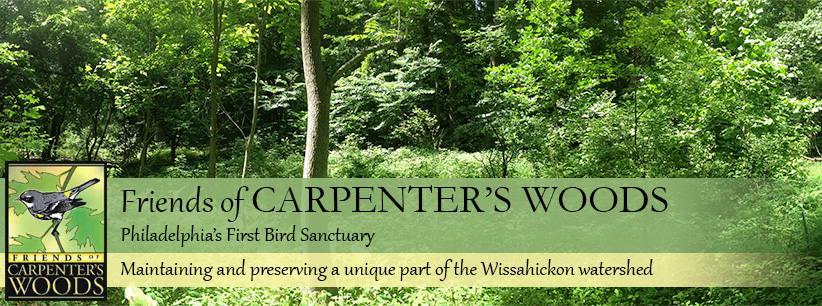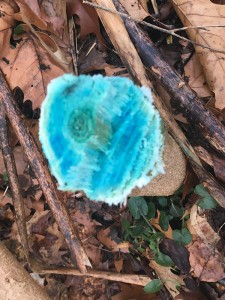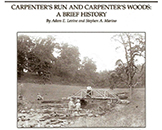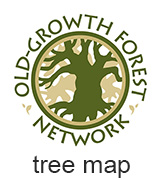If you’ve been in Carpenter’s Woods recently, you’ve probably noticed cut stumps painted blue and signs posted warning of herbicide treatments.
The current work is being done by a consultant/contractor, Land Studies, Inc. They are presently controlling a variety of invasive plants, including but not limited to devil’s walking stick, winged euonymous, bittersweet and porcelainberry. These species have been targeted for removal on volunteer service days held by Friends of Carpenter’s Woods, but they are widespread and cannot be contained by manual removal alone. Weather permitting, the contractors’ work will be completed this week.
The signs are standard practice for informing park users that herbicides are being used in a particular section that people (and pets) frequently use, particularly along trails. There should be a sign posted at both ends of the trail that runs through the area being worked on to notify trail users coming from either direction. Signs are usually left up for a day or so after the application.
The herbicide being used is Garlon 4 Ultra mixed with horticultural oil and blue marker dye. Garlon is used to kill invasive woody plants, typically in two ways. The first way is to cut the stem of the unwanted target plant and spray the mixture on the cut surface of the stem. This conducts the active ingredient to the roots, killing the plant. The second way is to spray around the circumference of a plant, up to about 15 inches above the ground surface. The horticultural oil carries the active ingredient into the plant’s cambium, killing the plant. Garlon 4 is highly specific to plants and poses little concern to people and animals. Keeping dogs on a leash (which is a park rule in any case) prevents them from running around the applicators and also rubbing against or ingesting any freshly-applied herbicide.
For more information and a description of the initial project, view the project fact sheet from PP&R.







